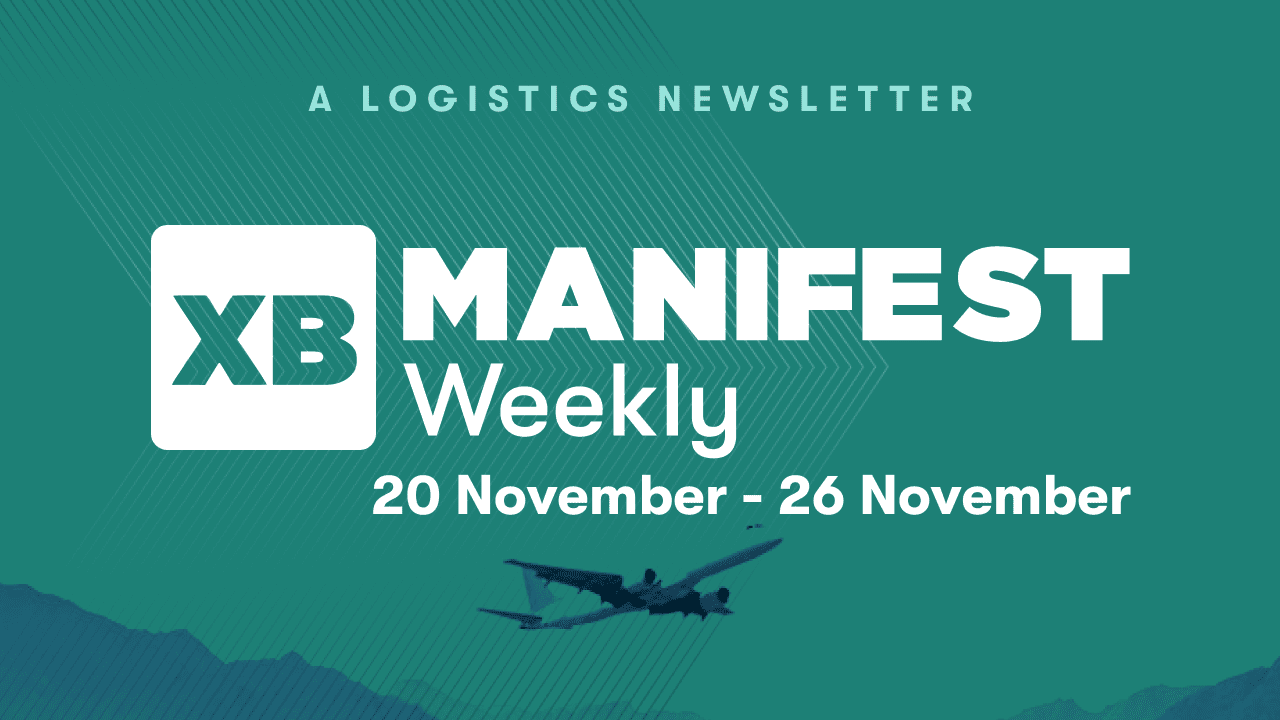This week, we’re covering California’s mandatory clean fuel plan, continued threats of an impending US rail strike, and the changes to Black Friday since the start of COVID.
IN THE NEWS
Your Weekly Spotlight
As 2023 inches closer, concerns about global warming continue to escalate as companies and legislators consciously look to build sustainability within the economy at-large. With weather changes incrementally adding to citizen woes across the world, institutions are actively trying to go green. In a bid to be more sustainable, the California Air Resources Board is proposing phasing out older big rigs operating in the busy corridors shuttling shipping containers between ports, rail yards, and warehouses and requiring that all new vehicles be powered by clean fuels starting in 2024.
The goal is to push more than 30,000 heavily-polluting trucks to clean energy by 2035. From 2025, the state would bar trucks powered by internal combustion engines that have more than 800,000 miles on them from operating at ports and rail yards.
The state of California leads the nation in its bid to wean drivers off the gas- and diesel-powered vehicles. CARB, the state’s main regulatory body for air quality, passed rules this summer banning the sale of new gasoline-powered cars by 2035. It has also passed rules mandating that truck dealers ensure zero-emission vehicles make up an increasing share of sales over the next decade.
The latest proposed rule, which also pushes fleets of vans, long-haul trucks, and buses to transition to zero-emission vehicles over varying timelines, is aimed at creating a market for dealers by forcing truckers into clean-energy rigs. The state regulatory board is expected to vote on the rule next spring.
TOP HITS THIS WEEK
From The Manifest
This Week at Logixboard
Logixboard U: Special Edition
We’re unveiling Logixboard Bookings– our latest push toward a comprehensive end-to-end shipping experience. Join us live to see it in action!
SUMMING IT UP
Key Takeaway
This ambitious plan has some loopholes that need plugging though. To start with, there needs to be infrastructure to support this initiative, as more and more companies may choose electric vehicles. But, as trucking industry officials say, there is a big gap between the target and the charging infrastructure that barely exists today and would take years to build.
The conflict between infrastructure and ambitions in California highlights the challenges that states face as they try to push some of the most heavily-polluting sectors of the logistics industry toward clean fuels. While the shift to clean fuels is a positive initiative in the long run, for the short term, truckers and transportation stakeholders will probably need to look at other sources of clean energy, and not just electric solutions to go green.
WHAT’S HAPPENING AROUND THE WORLD
Highlights
- US rail strike threatens after latest union rejection of compromise deal. Three months after a presidential emergency board had brokered a compromise between US rail carriers and labor unions, a 4th labor union has voted against the deal and a rail stoppage could happen as early as December 4th.
- Stores are forecasting healthy holiday shopping amid concerns about inflation and supply chain issues. As the holiday shopping season ramps up, area stores are anticipating a greater return to Black Friday traditions following three years of pent-up demand due to the pandemic.
- According to The American Farm Bureau Federation, a Thanksgiving dinner for a family of 10 is up 20% costing $64.05 from $53.31 last year due to supply chain issues and inflation. To battle this, Feeding Northeast Florida and the Jacksonville Jaguars hosted a turkey time distribution.
- The U.S. will probably stick a soft landing next year: the world’s largest economy is forecast to narrowly avoid a recession as inflation fades and unemployment nudges up slightly, according to Goldman Sachs Research.
- Trailer orders soar in October as OEMs raise intake. Orders jump 82% over September and 168% year over year. A return to normalcy among trailer manufacturers gained momentum in October with order intake as much as 91% higher than in September and 171% greater than a supply chain-constricted October 2021.
ON OUR RADAR
Trending
Before COVID-19, Black Friday and Cyber Monday were important dates for the holiday season, as retailers and store owners prepared for the last-minute rush with deep discounts and special offers. Throughout the pandemic though, the Black Friday fiesta shifted online as lockdowns forced retailers to take the e-commerce route. Now in 2022, with stores open again and life returning to normal (despite the pandemic), many store owners expect the Black Friday rush to resume. But we might be living in a time when Black Friday has essentially changed, despite expectations to the contrary.
Whether you view that as enjoyable, or quite the opposite, there’s reason to expect that Black Friday is changing. There are growing supply and demand-side reasons why much of the Black Friday bacchanalia will be very different in the years to come. Across much of the country, labor markets are tighter now than they’ve been in two decades. The most difficult jobs to fill are always at the bottom of the pay scale, and that often means retail establishments. That’s the risk to the traditional Black Friday we’ve come to know.
Black Friday at any store is a large operation, requiring substantial staff and expensive overtime. Even efficient, highly productive firms, like Walmart or Target, are strained. It is simply becoming too expensive to continue the way it has been. Very tight labor markets make retail employees more expensive. That dampens the ability of a store to offer the extended hours and high-volume shopping that normally have accompanied Black Friday. While most stores cut back on hours during COVID, many are making even deeper reductions in the hours of opening.
On the other hand, many players have already started the ‘Black Friday’ or ‘Cyber Monday’ fiestas since November, offering deep discounts to dispose of excess inventories. Offers on products in-store and online are both a-plenty, giving consumers more time to prepare for their holidays. All of this points to how Black Friday may change from the mad rush at shops to a more planned, longer, shopping season.






